
March 3, 2025
Play by the Rules! 17 of the Best Board Games from the 90s
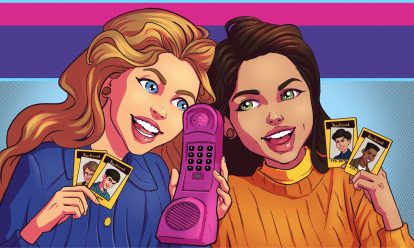
February 28, 2025
The Dream Phone Board Game: Who’s Got A Crush On You?
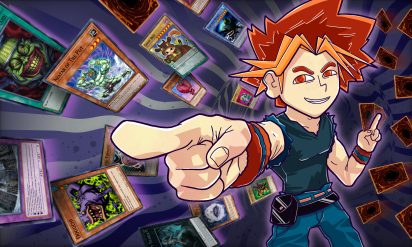
March 3, 2025
30 Funny, Terrifying and Weird Yu-Gi-Oh! Cards
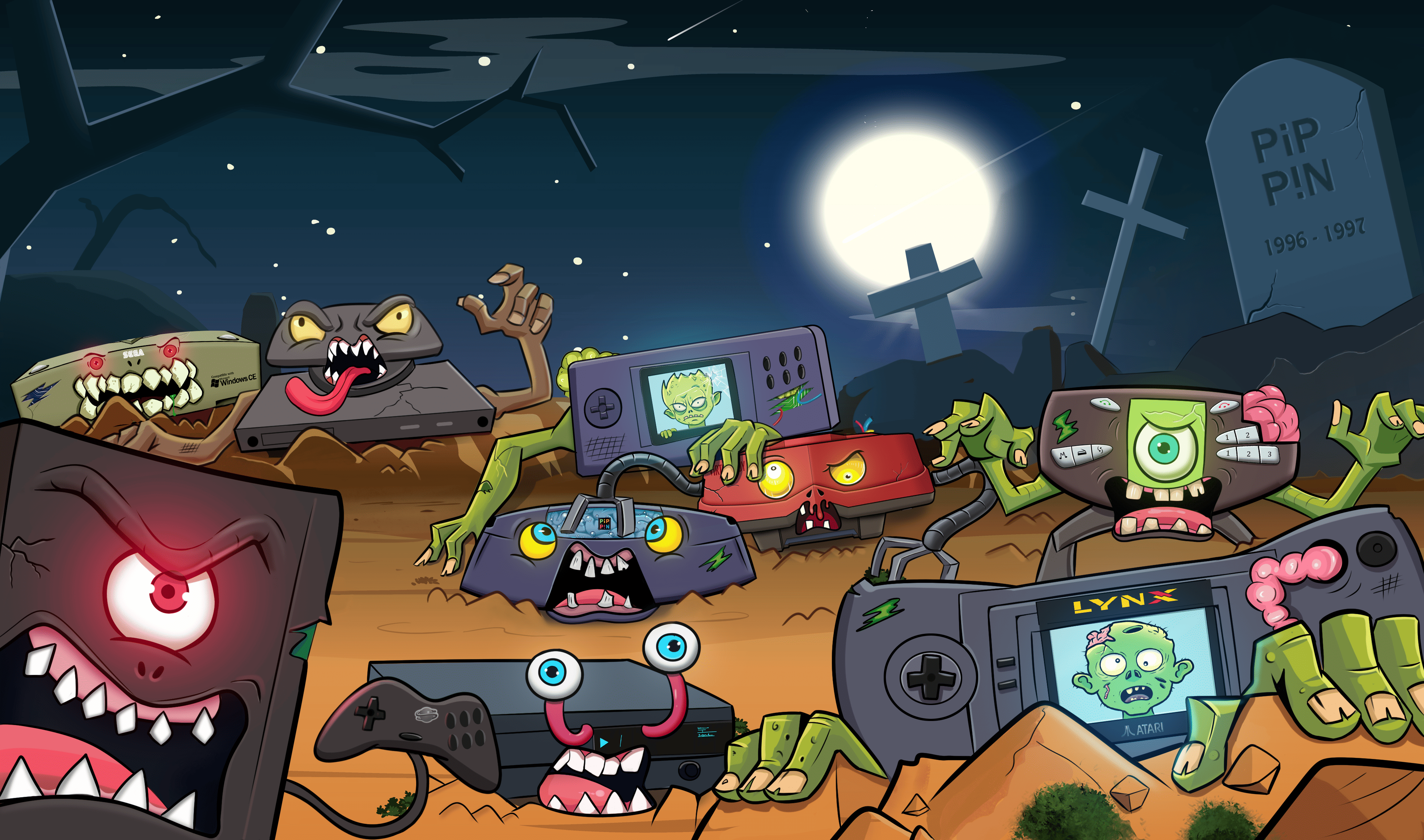
As gamers, we tend to get pretty excited when there’s a shiny new video game console right around the corner. Companies know exactly how to fan the flames of hype within the gaming industry with press conferences, previews, and stage demonstrations, but it’s important to remember that all of those things are conducted under the best conditions possible. Sometimes, the things we see on TV (or on the internet) don’t exactly live up to the expectations that we set for them. This continues to be true today – and there are definitely some modern examples of that phenomenon – but we’re more interested in the video game consoles that came before gaming was “figured out”. Let’s take a look at some of the very worst video game consoles to ever hit store shelves.
Note: While many of the consoles on this list have gone down in history as commercial failures and stains on their companies’ histories, some of them are remembered fondly and even beloved to this day.
For those who don’t know, Atari was at the forefront of home console gaming from its inception. The company wasn’t the first to bring the joy of arcade gaming to people’s living rooms; that distinction goes to the Magnavox Odyssey console from 1972. However, it didn’t take Atari long to blast past the Odyssey and basically scrub its memory from existence.
Atari essentially ruled the home console market for much of the ’70s and ’80s. Unfortunately, their reign and market leadership as well as their attempts to stay in the hardware business would come to an end by the mid-90s thanks to these two video game consoles.
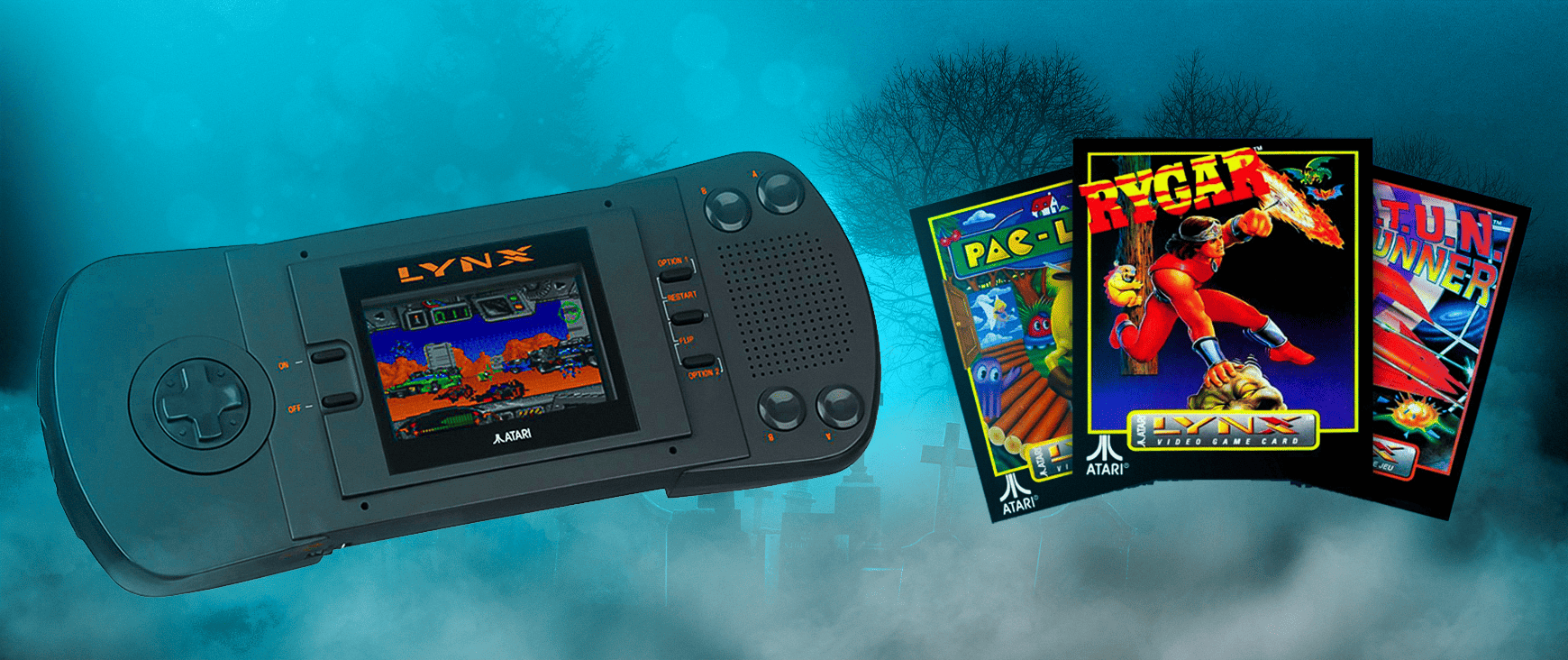
Launched: September 1st, 1989
Introductory Price: $179.99
Final Price: $99
Discontinued: 1995
Units Sold: 2 million
The Atari Lynx was a pretty impressive console when it first hit the video game market.
It featured the first full-color LCD screen with a backlight ever seen on a handheld device, and its design made that screen compatible with both right and left-handed gamers. At the touch of a button, the image on the 3.5-inch screen would turn upside down to facilitate ambidextrous play. It also had hardware that could handle 8 and 16-bit games, with co-processors that could stretch and distort sprites to create the illusion of 3D graphics. Something that wouldn’t actually be possible on handhelds without visual tricks for many years. With enough ComLynx cables, up to eight consoles could connect for interactive multiplayer, another impressive feat for the time.
Sadly, while the screen was colorful, it was also extremely small and power-hungry. Six batteries got you roughly four hours of playtime. And while the ambidextrous design offered greater accessibility, it also made the console far bulkier than its competitors. Even the Game Gear, which wasn’t necessarily known for being pocketable.
Unfortunately, its impressive hardware wasn’t enough to save it from Nintendo. The primary competition for the Lynx was the far less advanced Game Boy, which steamrolled it in terms of sales and critical acclaim. An improved version of the Lynx was released in 1991, but it was never able to cover the ground it lost. Atari essentially gave up on the Lynx in 1993 to focus on its next home console: the Jaguar.
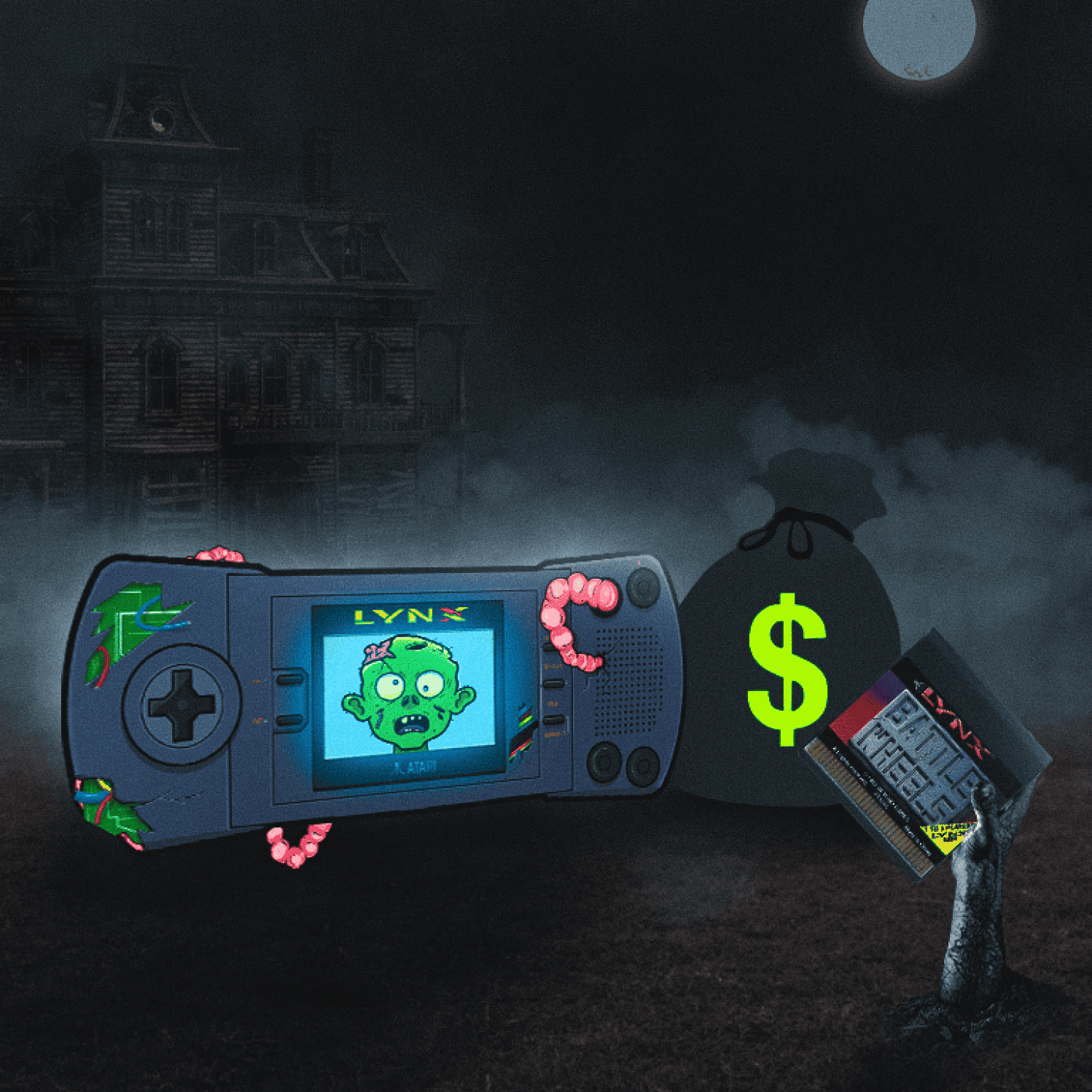
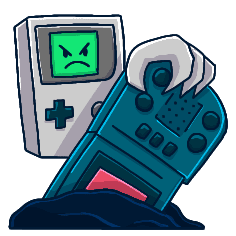
Fact
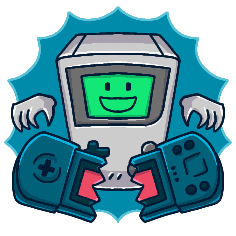
The Game Boy was released 2 months before the Lynx, and sold more than 118 million units.
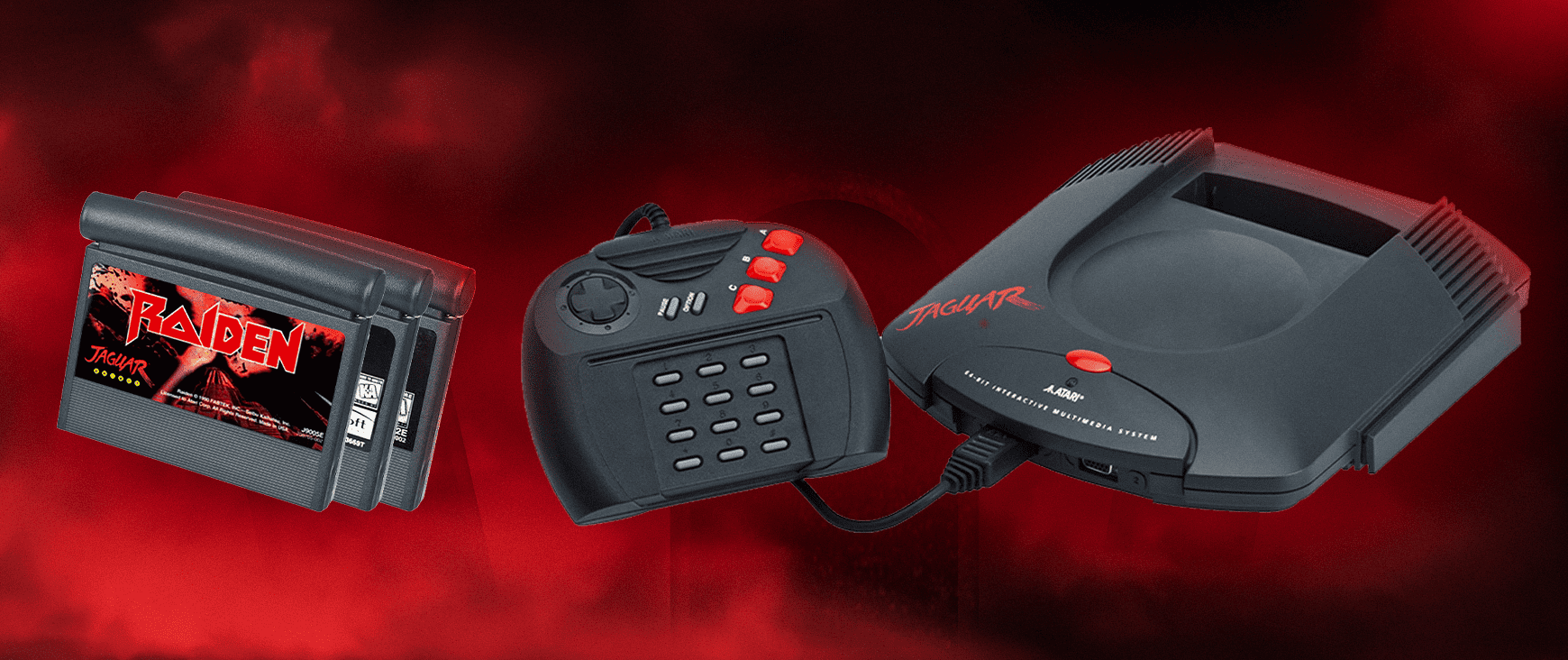
Launched: November 23rd, 1993
Introductory Price: $249
Final Price: $99
Discontinued: 1996
Units Sold: Less than 150,000
Ah, the Jaguar. A game console that had a terrible name, a horrible controller, and an even worse slogan:
“Get bit by Jaguar”
Just awful. The Jaguar was the final attempt at some kind of success for Atari, which was struggling to stay relevant as a company in the face of Nintendo and Sega. The console was marketed as a “64-bit” gaming console, although in reality it was powered by two 32-bit processors. Due to how programming and processing power works, that isn’t really the same thing.
Marketing quibbles aside, the Jaguar was surprisingly powerful for its time. That power came at a price though, as the multi-chip structure of the console made it difficult to make games for, which affected sales of the console. Then an ouroboros effect set in that caused the Jaguar to languish on store shelves. Only 50 licensed games were released for the base version of the Atari Jaguar.
Once Sega released the Saturn and Sony followed suit with the PlayStation, the Jaguar’s fate was essentially sealed. Atari wasn’t able to build interest in the Jaguar partly because they couldn’t afford a big marketing campaign for it, and partly because the public was just more interested in Sony and Sega.
The obliteration of the Jaguar dashed Atari’s hope to continue as a gaming company, and it quickly exited the console market.
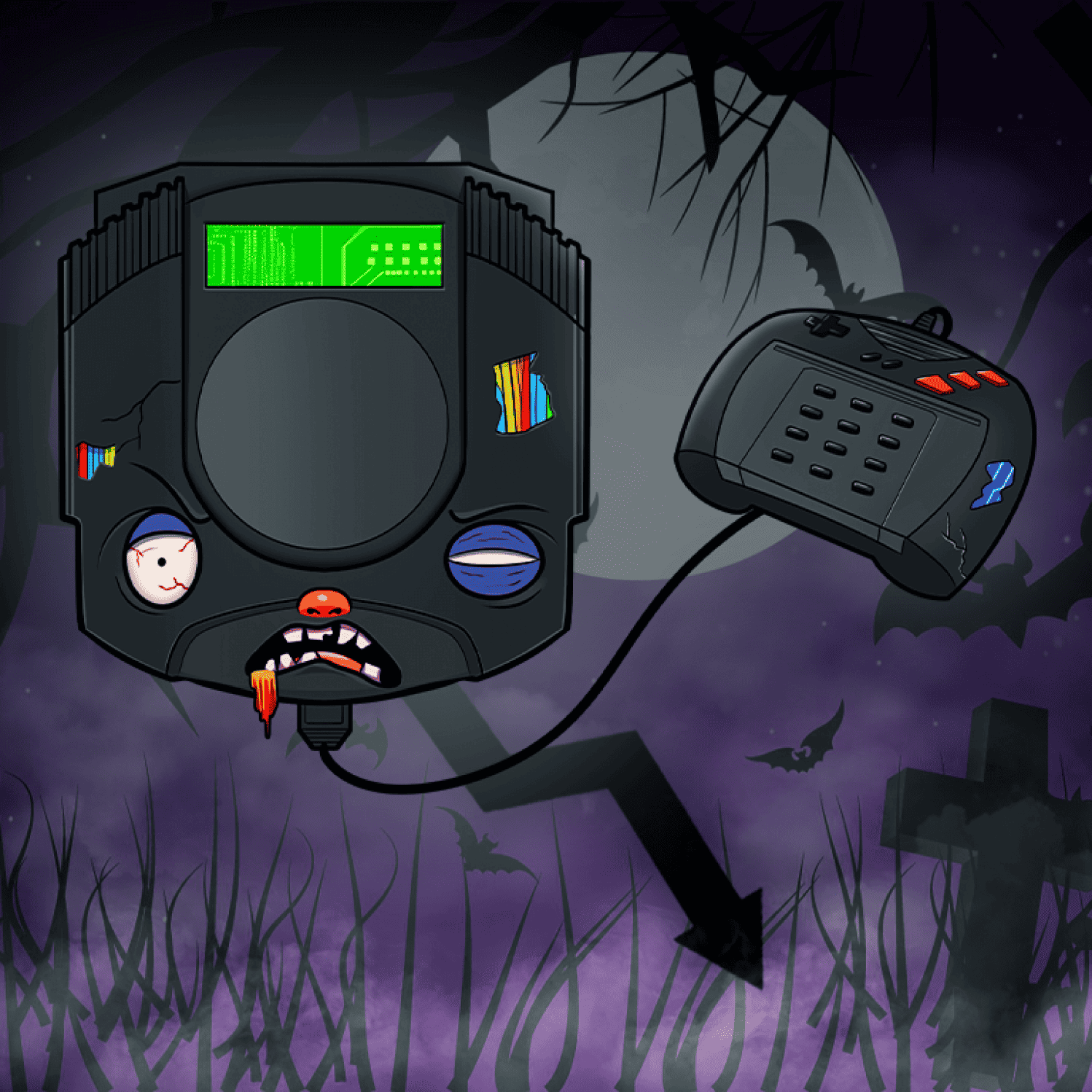
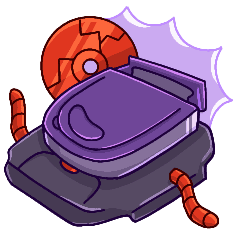
Fact
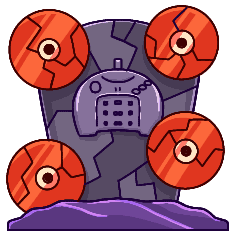
Atari tried to inject some life into the Jaguar by releasing a disk-reading peripheral called the Atari Jaguar CD. Only 13 games were created that supported the add-on, and it definitely didn’t save the Jaguar.
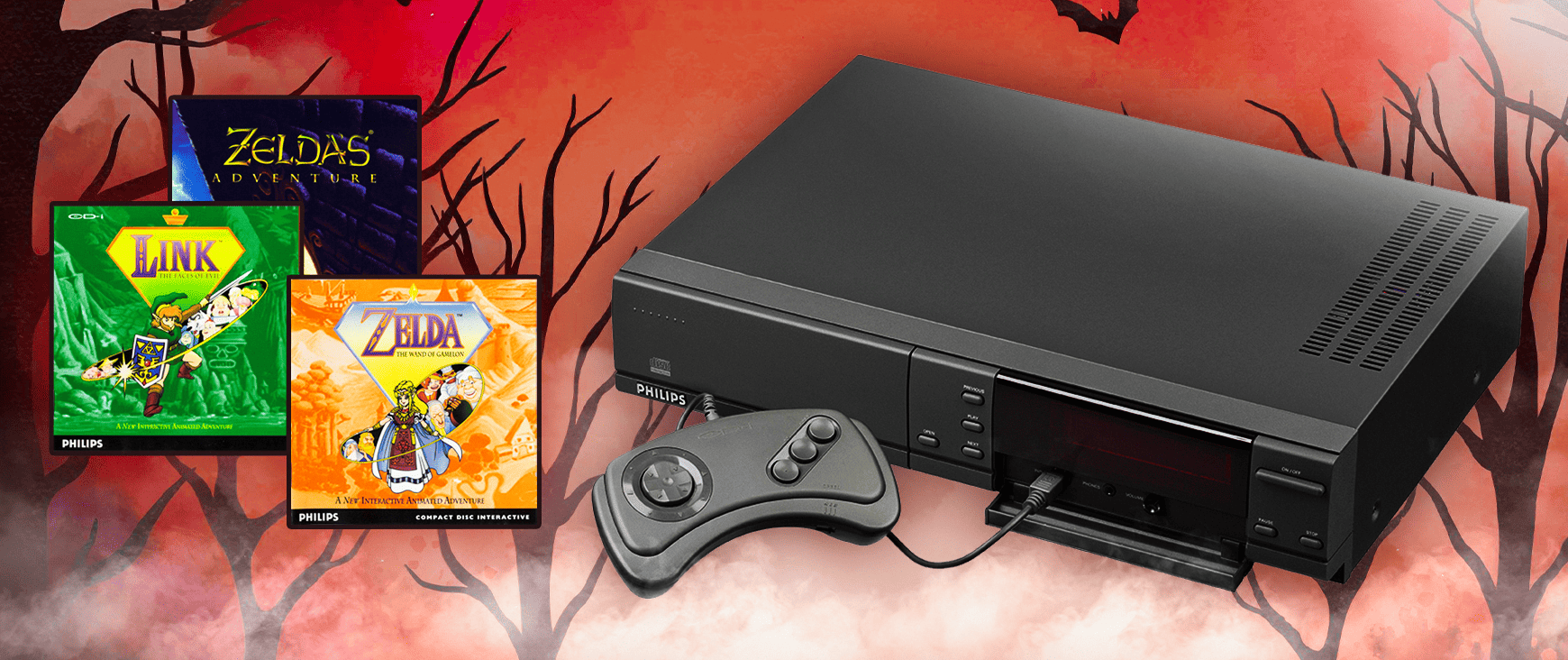
Launched: December 3rd, 1991
Introductory Price: $700
Discontinued: 1998
Units Sold: 570,000
Ok, this one is a little tricky.
The CD-i (which stands for compact disc interactive) is actually a disc format that was created by Sony and Philips. It was supposed to be an extension of the CD-ROM that combined audio, text, and graphics on a single disc, but would also require a special player. The advanced format was created with the intent of being used in education and sales settings, but it is mostly known now for its licensed Nintendo games.
You see, Nintendo attempted a collaboration with Philips to develop a disk-based add-on for the SNES. While that partnership ultimately never resulted in an actual piece of hardware, the agreement between the two companies allowed Philips to develop games based on five Nintendo characters for the CD-i.
And thus, the worst Nintendo games of all time were born. How could we forget the Zelda and Mario games that the CD-i graced us with. No, seriously, how can we forget them? They live on as a stain in our collective brain.
It’s difficult to say no to a Mario or Zelda game (even terrible ones, apparently), but the exorbitant $700 price tag of Philips’ CD-i Player multimedia device (over $1,500 in today’s money), a terrible controller, and the fact that many consider the Nintendo CD-i games to be the worst games ever created meant few people actually wanted to buy one. Further, if you wanted to play a game that had actual video in it, you had to also purchase an FMV (full motion video) cartridge add-on. An extra $200 expense.
The CD-i’s poor sales reportedly cost Philips $1 billion in losses, and Nintendo disowned those licensed games and continues to pretend they never existed. As they should.
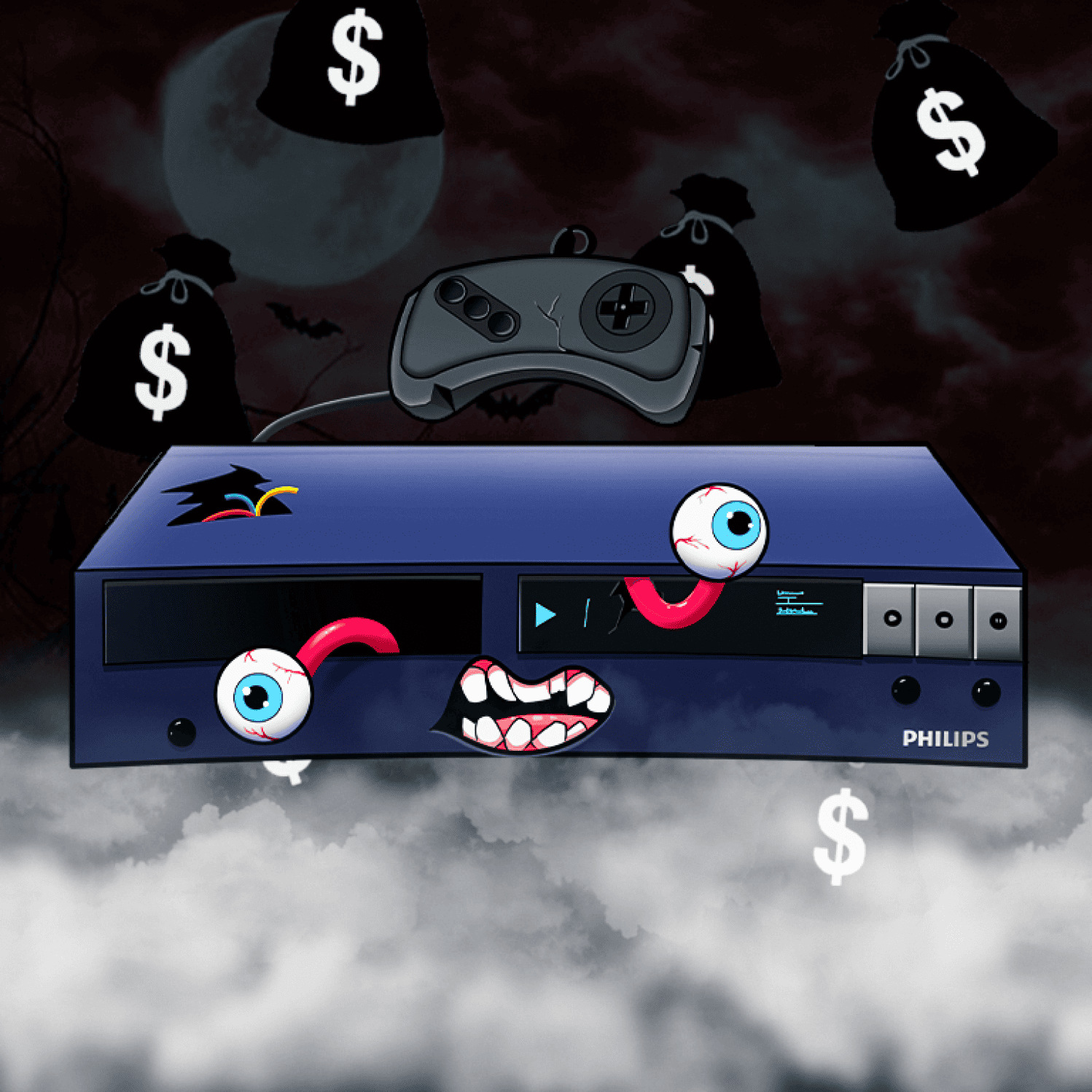
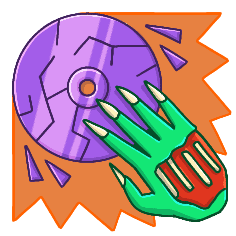
Fact
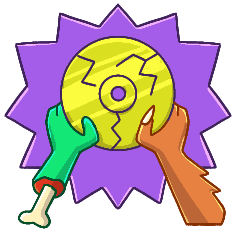
Nintendo’s deal with Philips was done as a not-so-subtle swipe at Sony, who was already working on the SNES-CD when the surprise collaboration was announced. The move created tension between the two companies, and Sony soon took the hardware they were developing for Nintendo to create their own console: The PlayStation.
Sega was once at the forefront of gaming, having been around to manufacture and develop arcade cabinets through the video game arcade boom of the 70s. They maintained a strong presence throughout the 80s by moving into home video game consoles, and they had a few hits in the 90s with the Master System and the Genesis. But a few prolific tumbles after those consoles led to their downfall as a hardware maker.
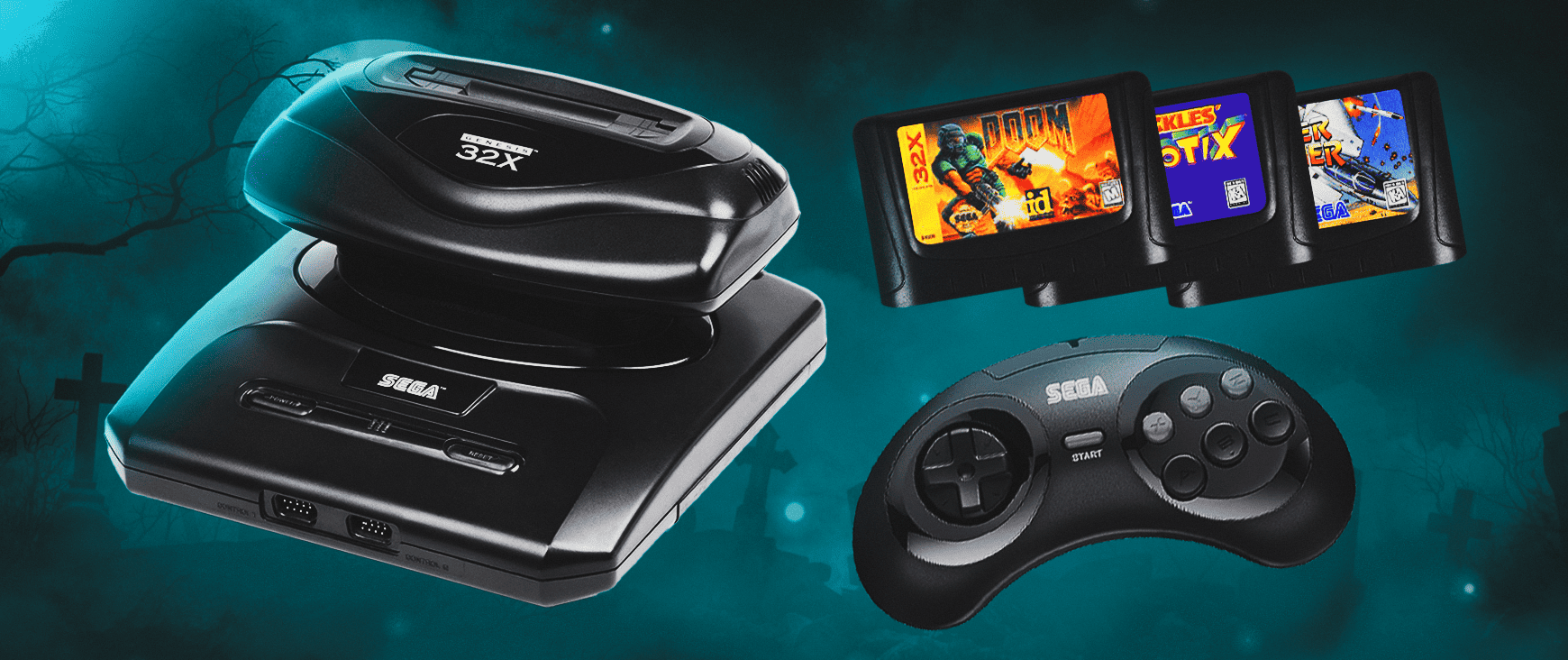
Launched: November 21st, 1994
Introductory Price: $159.99
Final Price: $19.95
Discontinued: 1996
Units Sold: 800,000
The 32X is unique among its peers on this list for one primary reason: it’s not actually a standalone console.
It was instead an add-on for the popular Sega Genesis console that was designed to keep Sega competitive in the gaming industry as more powerful gaming consoles arrived, including the ill-fated Atari Jaguar. Sega marketed the hardware as a low-cost entry to a higher tier of gaming as the 32-bit era reared its head, which wasn’t a bad idea all things considered. Early reviews of the 32X celebrated its low $160 price point ($330 today) and its leap in power over the Genesis it had to be strapped to.
Unfortunately, the wannabe console failed for a number of reasons. The add-on was rushed to the console market, so developers including Sega’s own in-house teams didn’t have time to make anything of quality for it. As a result, the 32X showed up on the scene with a library of low-quality games, which resulted in low sales after the initial hype died down. Further, it was difficult to get third parties to focus on the 32X when the PlayStation, N64, and Sega’s own next-gen console were right around the corner. No games meant no interest, which in turn meant no sales, and Sega discontinued the 32X after just over a year.
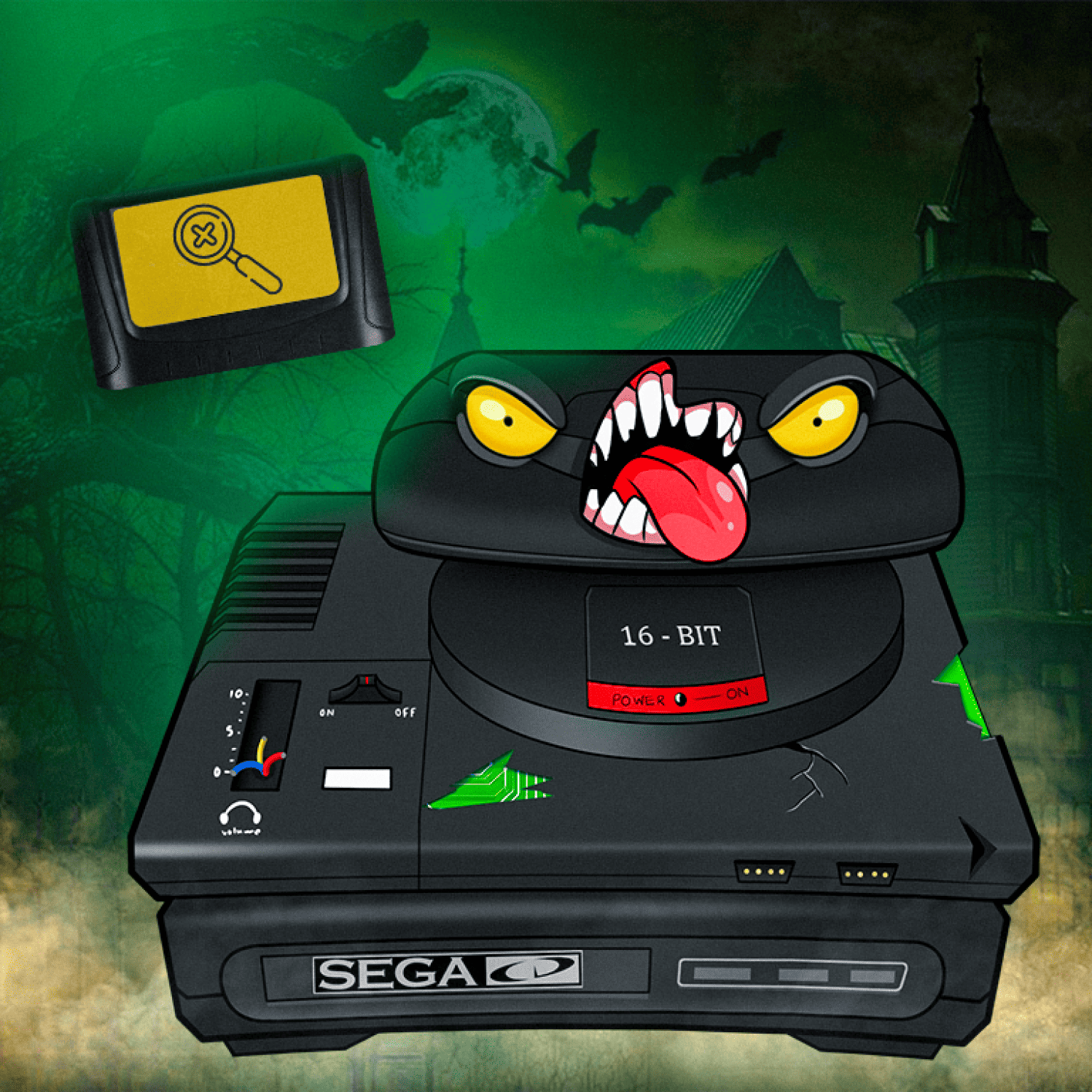
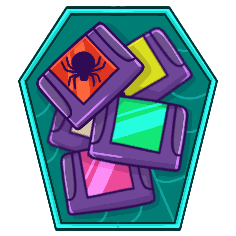
Fact
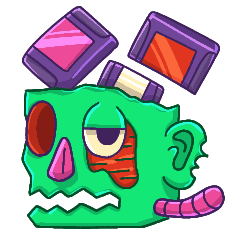
The 32X’s game library consisted of a total of 40 titles.
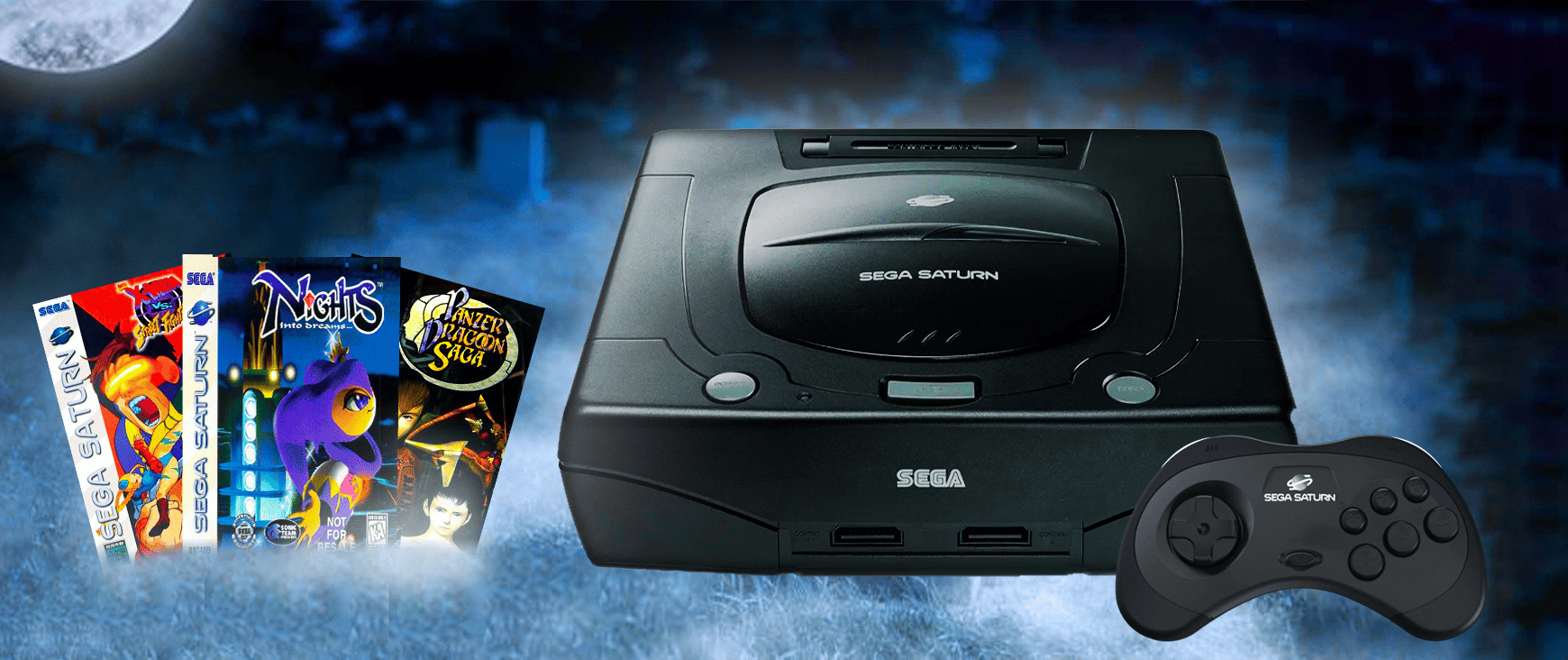
Launched: May 11th, 1995
Introductory Price: $399
Final Price: $149
Discontinued: March 1998
Units Sold: 9.26 million
Funny enough, one of the nails in the 32X’s coffin was the Sega Saturn, a console that had already been announced for release when the 32X hit stores.
The Saturn was Sega’s answer to the PlayStation, but in their rush to get to the North American gaming market before Sony, Sega opened themselves up to a critical blow. When they announced a May release at $399, Sony announced that the PlayStation would come to America in September at $299. A whole hundred dollars less.
The rest of the Sega Saturn’s lifecycle was a pricing competition with Sony. They cut the price to $299 just five months after launch, and matched Sony again at $199 a year later. Even with the price cuts, the PlayStation outsold the Saturn two to one, and Sega was hemorrhaging money since the Saturn was more expensive to produce (they were losing about $100 on every unit sold). When Sega began to clear out Saturn consoles, they dropped the price even further to $149.
On top of the price battle, mismanagement within Sega caused the 32X to release too close to the Saturn, which resulted in consumer confusion and distribution issues. By the time the Nintendo 64 reared its head in September 1996, the Sega Saturn was essentially cooked. When Sega discontinued the Saturn in March 1998, they posted a $254 million net loss.
However, it wouldn’t be Sega’s swansong. That comes later.
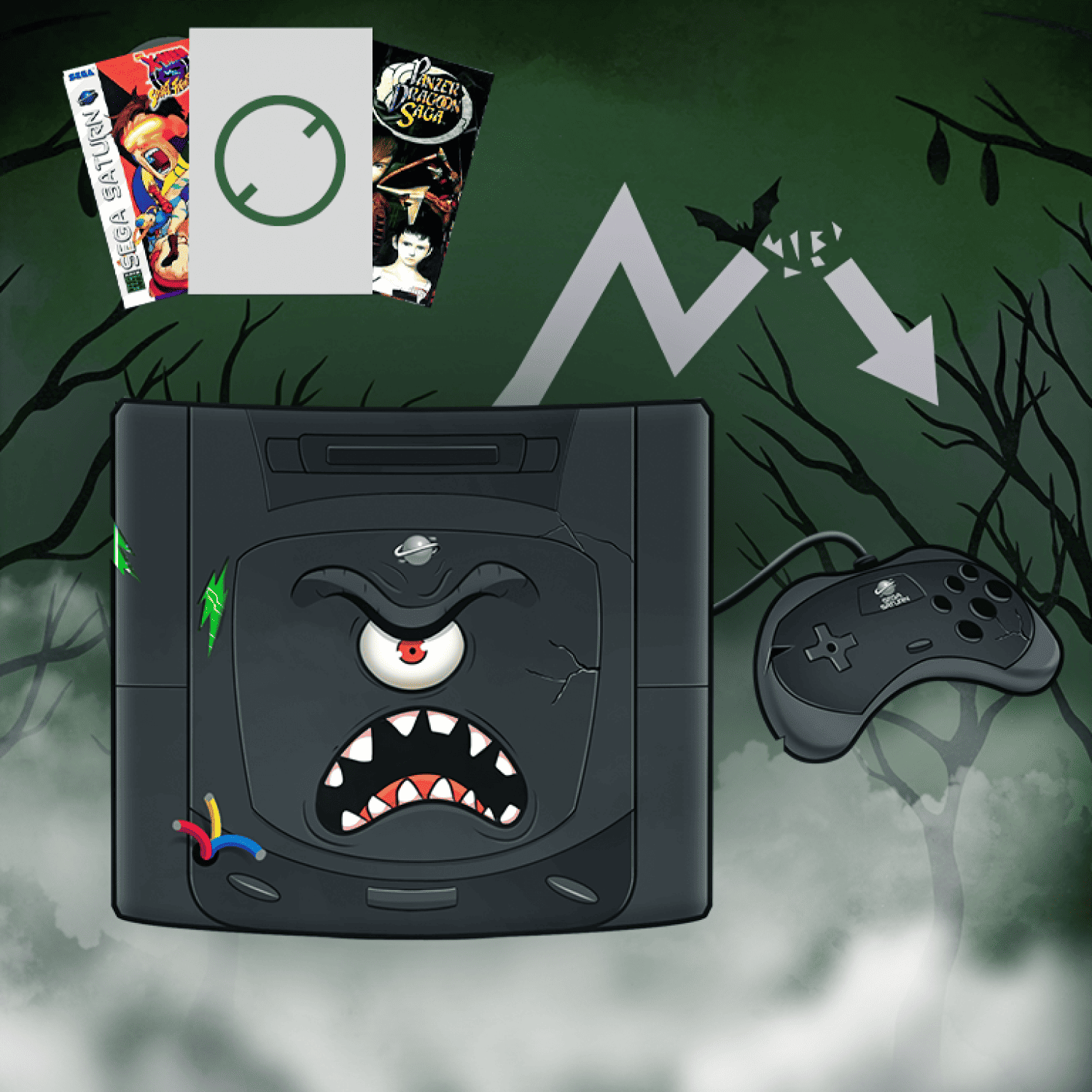

Fact
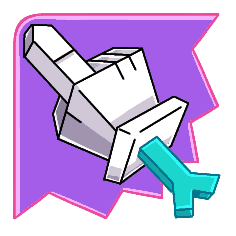
The first ever, fully 3D sonic game – Sonic X-treme – was in development for the Saturn. The game’s development was unfortunately canceled, and many believe that Sega’s failure to put that game out played a big part in the downfall of the Saturn.
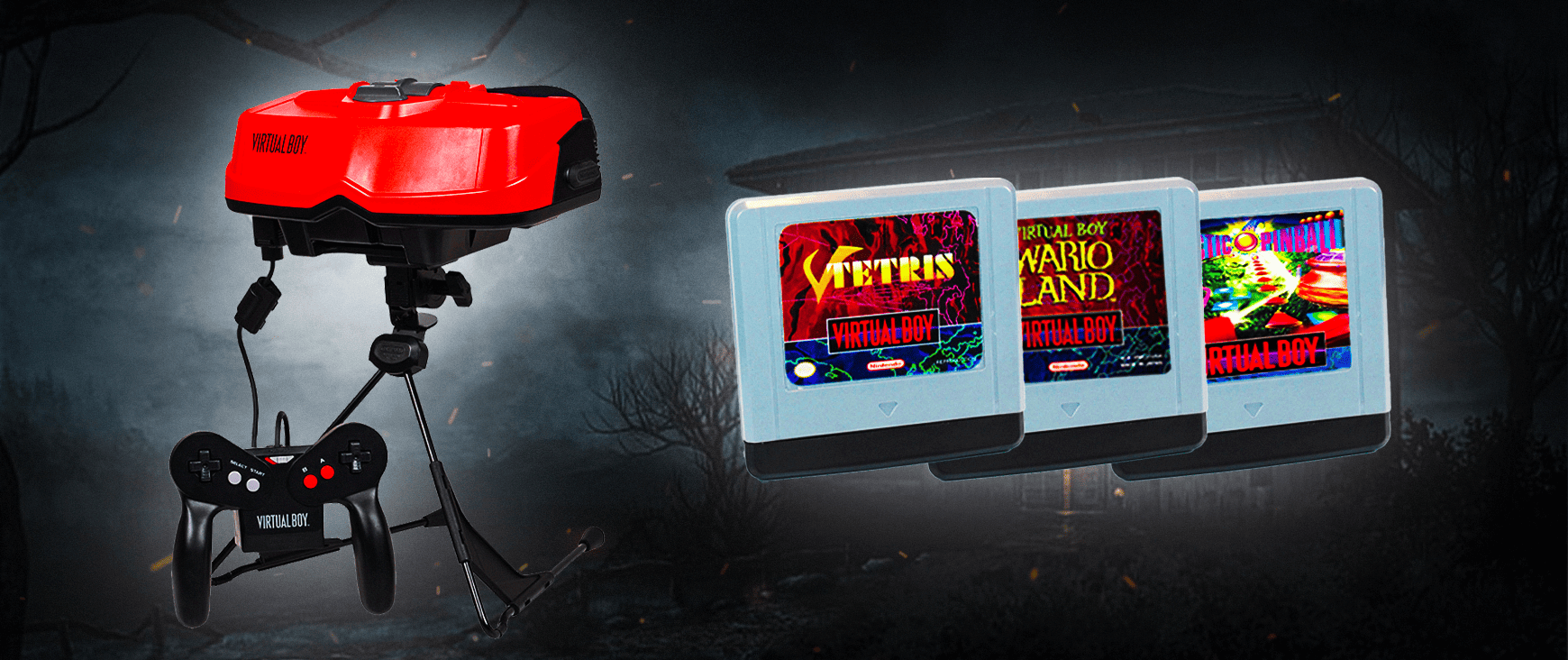
Launched: August 14th, 1995
Introductory Price: $179.95
Final Price: $30
Discontinued: August 1996
Units Sold: 770,000
So, up to this point in the list, it would be out of line to say any of the prior consoles were the “worst” of what their respective companies had to offer. Commercial failure and poorly-timed launches, yes, but not the worst.
The Virtual Boy, however. Now THAT’S worthy of the title of worst console.
Nintendo’s Virtual Boy was designed with the intention of being the first console capable of displaying stereoscopic 3D images for virtual reality gaming, and it did do that. However, it also had a red monochrome display that was inset within a visor that was too heavy to use for extended periods, so it came with a stand and was only intended for use while sitting down.
The system’s only input method – a horrifyingly unergonomic controller – made it painful to, you know, actually play games on it. But maybe that was part of the system’s design to limit playtime. The Virtual Boy was notorious for giving users eye strain, neck pain, and nausea, and it had a measly battery life of around 4 hours running on SIX AA batteries. So if you didn’t give up playing it after a few hours, its batteries would anyways. Once all of these downsides became public knowledge, the system sold poorly.
In the years since the Virtual Boy was released, it has been revealed that Nintendo pushed the virtual reality gaming system out in an unfinished state so that they could focus their resources on the impending N64. In fact, they wanted to forget the Virtual Boy so badly that they lowered the price officially to $99 just seven months after release, and there are reports of units purchased from Toys R’ Us for $30 or less.
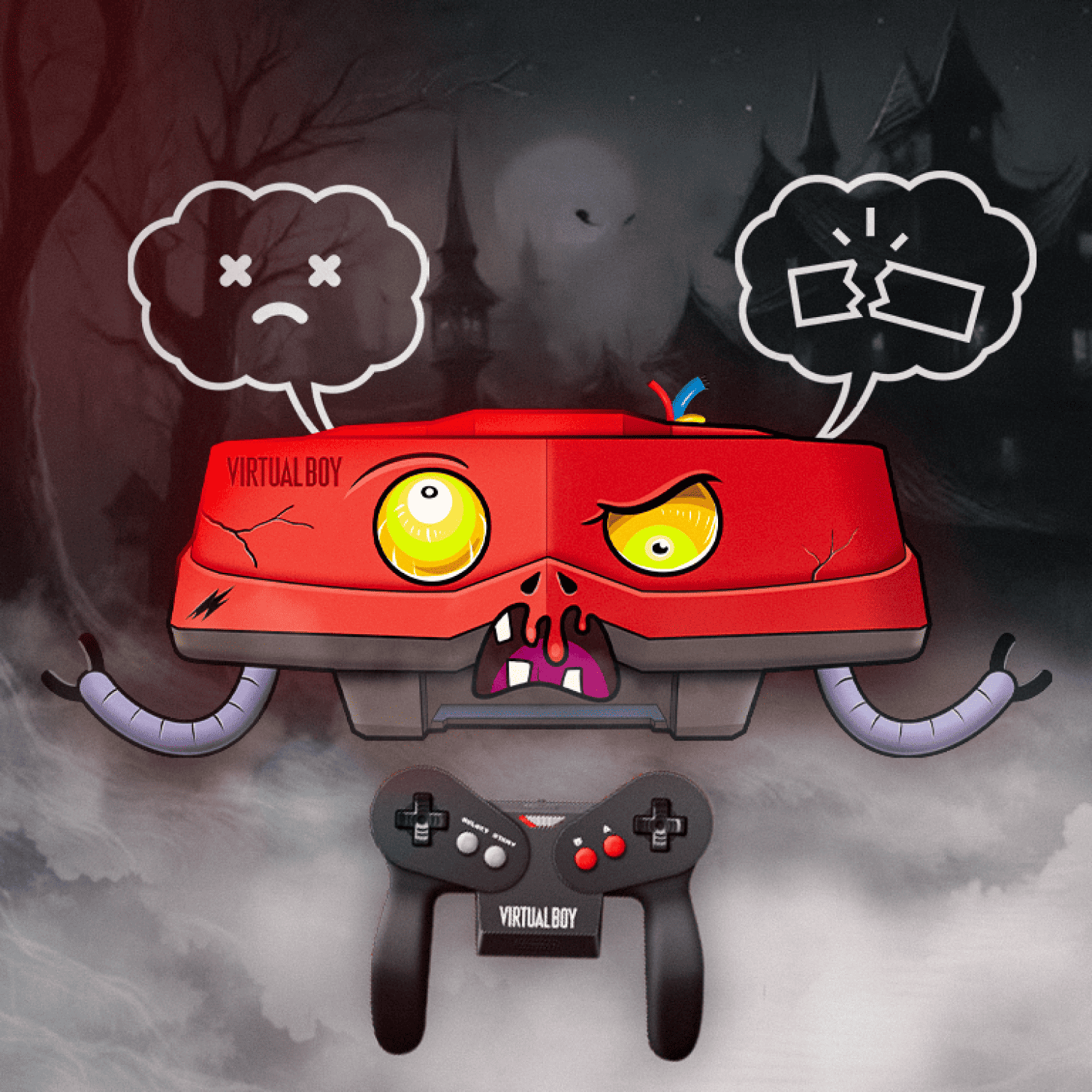

Fact
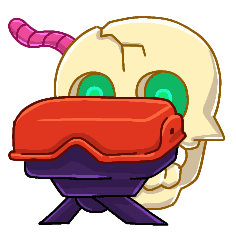
The Virtual Boy only had 22 (nausea inducing) games made for it.
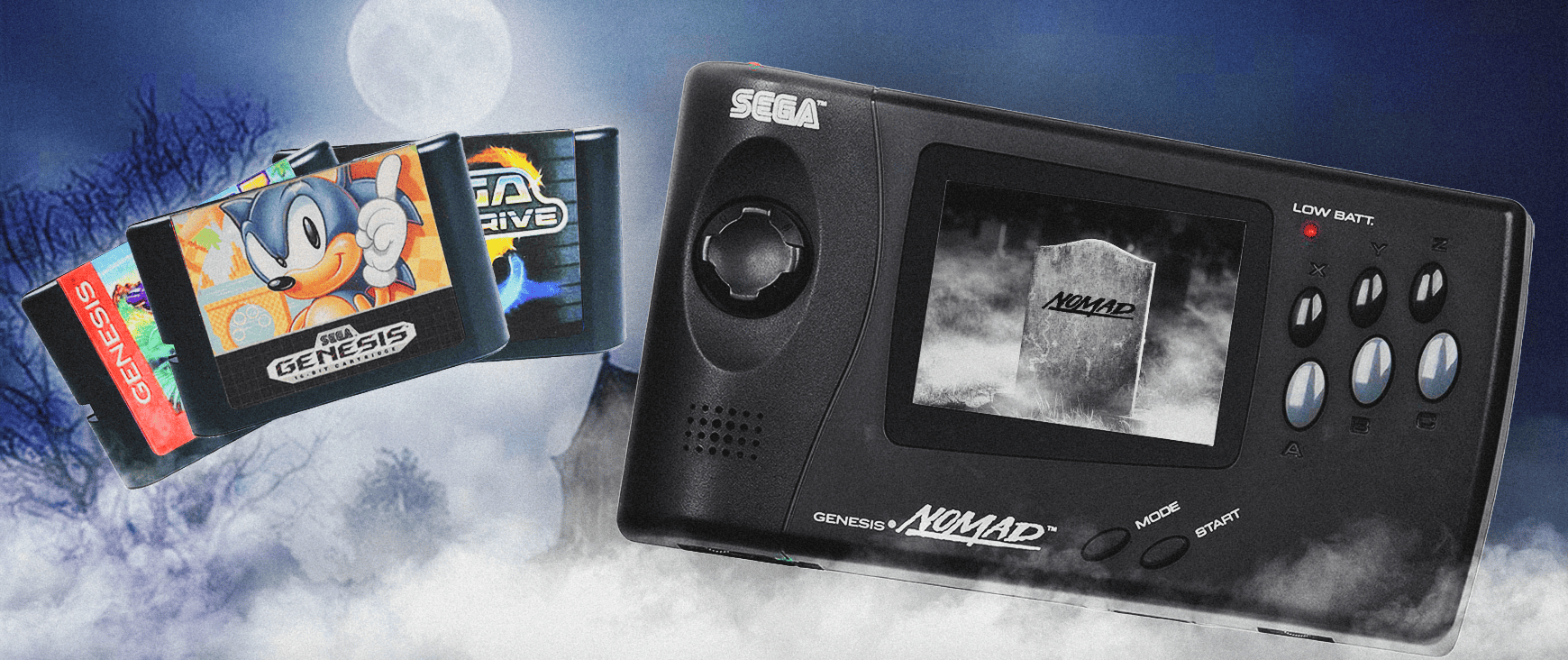
Launched: October 1995
Introductory Price: $179
Final Price: $59
Discontinued: 1999
Units Sold: 1 million
Picture this: a handheld console that can play physical copies of console games, and can also be plugged into a TV to act like an actual home console. That concept has been fully realized now thanks to the Nintendo Switch, but prior to its release, that kind of device was unheard of.
However, that’s essentially what Sega did with their long-forgotten Nomad handheld in the mid-90s.
It really was a portable Sega Genesis that gamers could enjoy on the go, allowing Genesis owners to make use of their game collection anywhere while also offering options to use it as a home console by plugging it into the TV in their living room. A novel concept and perhaps one that should have been rewarded, but the Nomad was unfortunately not long for this world.
First of all, the Nomad was only ever sold in North America, and it was region-locked. So even if Genesis owners overseas wanted to import one, their game collections would be useless. Also, in typical Sega fashion, the Nomad felt like it came along too late. The Saturn was already out, and both consumers and developers were turning their attention to the new consoles, meaning there wouldn’t be anything new to enjoy on the Nomad.
With the Game Boy dominating everything in the handheld space and Sega choosing to focus on the Saturn, the Nomad suffered through several steep price cuts before it was discontinued four years later at one-third of its starting price.
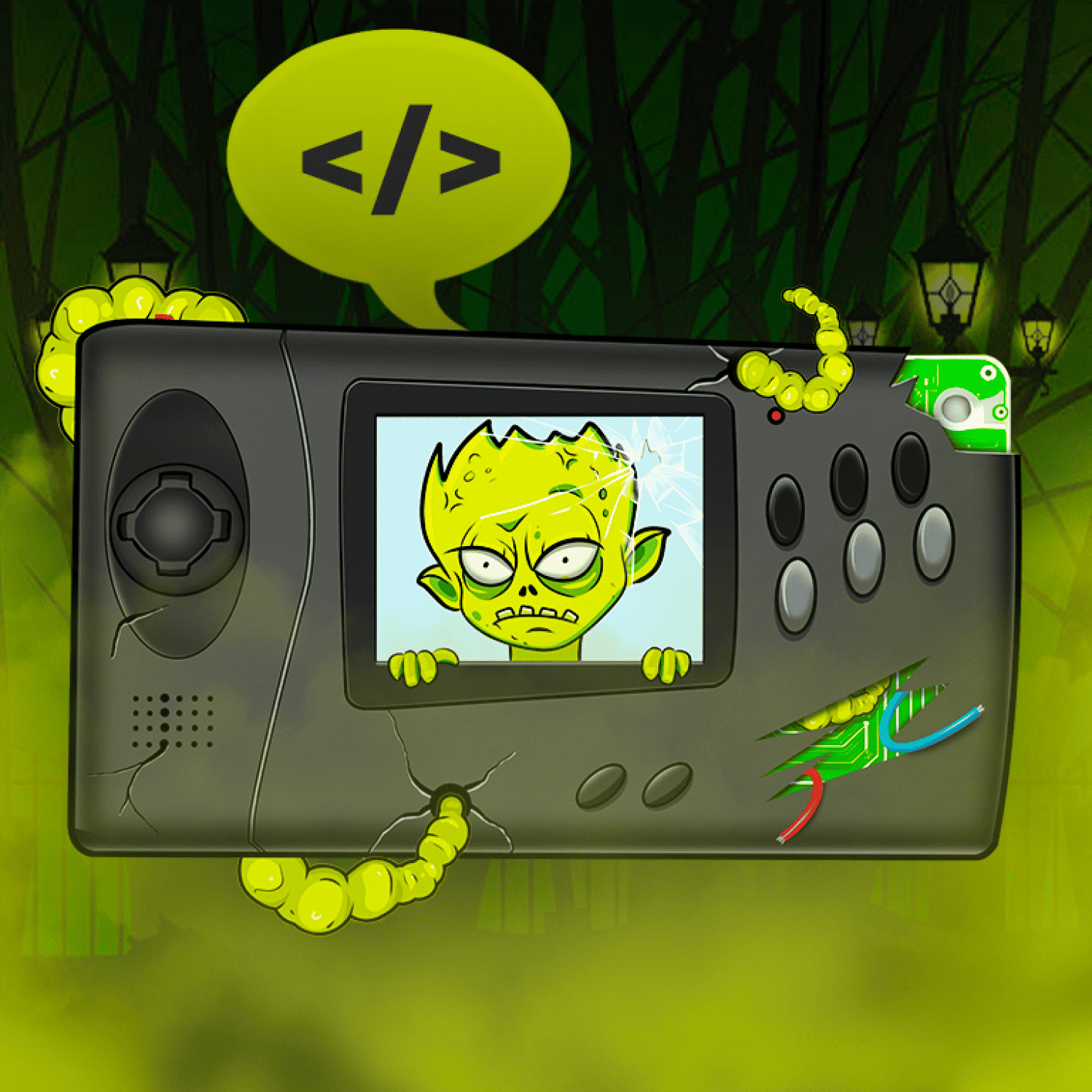
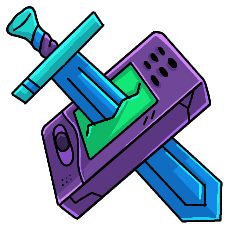
Fact
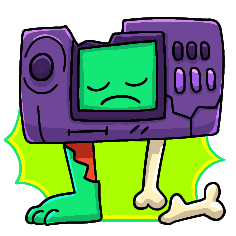
Despite literally being a Sega Genesis console in a portable form factor, the Nomad was not compatible with Genesis add-ons like the Sega CD or 32X.
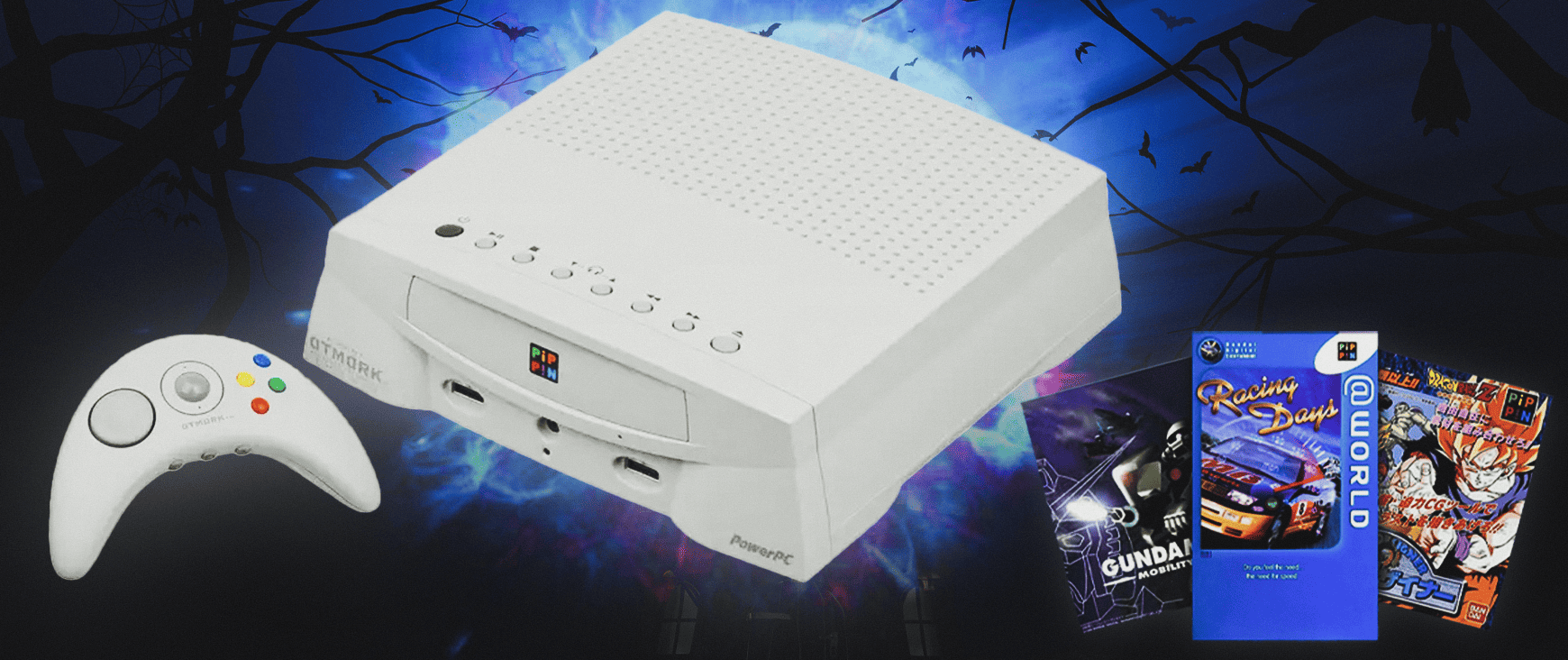
Launched: June 1996
Introductory Price: $599
Discontinued: 1997
Units Sold: 42,000
Like the Philips CD-i, Apple’s Pippin was not solely meant to be a gaming platform even though that’s what it’s remembered for today.
Apple developed Pippin as a platform for computing, television, and entertainment, and they intended to license their platform to other manufacturers to create an open standard. Valve did something similar with their “Steam Machines” in the mid-2010s (which were also failed video game consoles).
The Pippin didn’t catch on the way Apple thought it would. Apple teamed up with Bandai to create Pippin hardware solely for gaming, but it was really dead in the water right out of the gate. It cost $599 ($1,120 today), it didn’t have any dedicated processors for graphics or sound, and entered a market that was already being dominated by Sony’s PlayStation and Nintendo 64.
The price was too high, it wasn’t user-friendly, and the entire project seemed like it was born out of a complete misunderstanding of what consumers want out of a game console. The Apple Bandai Pippin hardware has gone on to earn the distinction of being labeled as one of the “25 Worst Tech Products of All Time” according to PC World circa 2006.
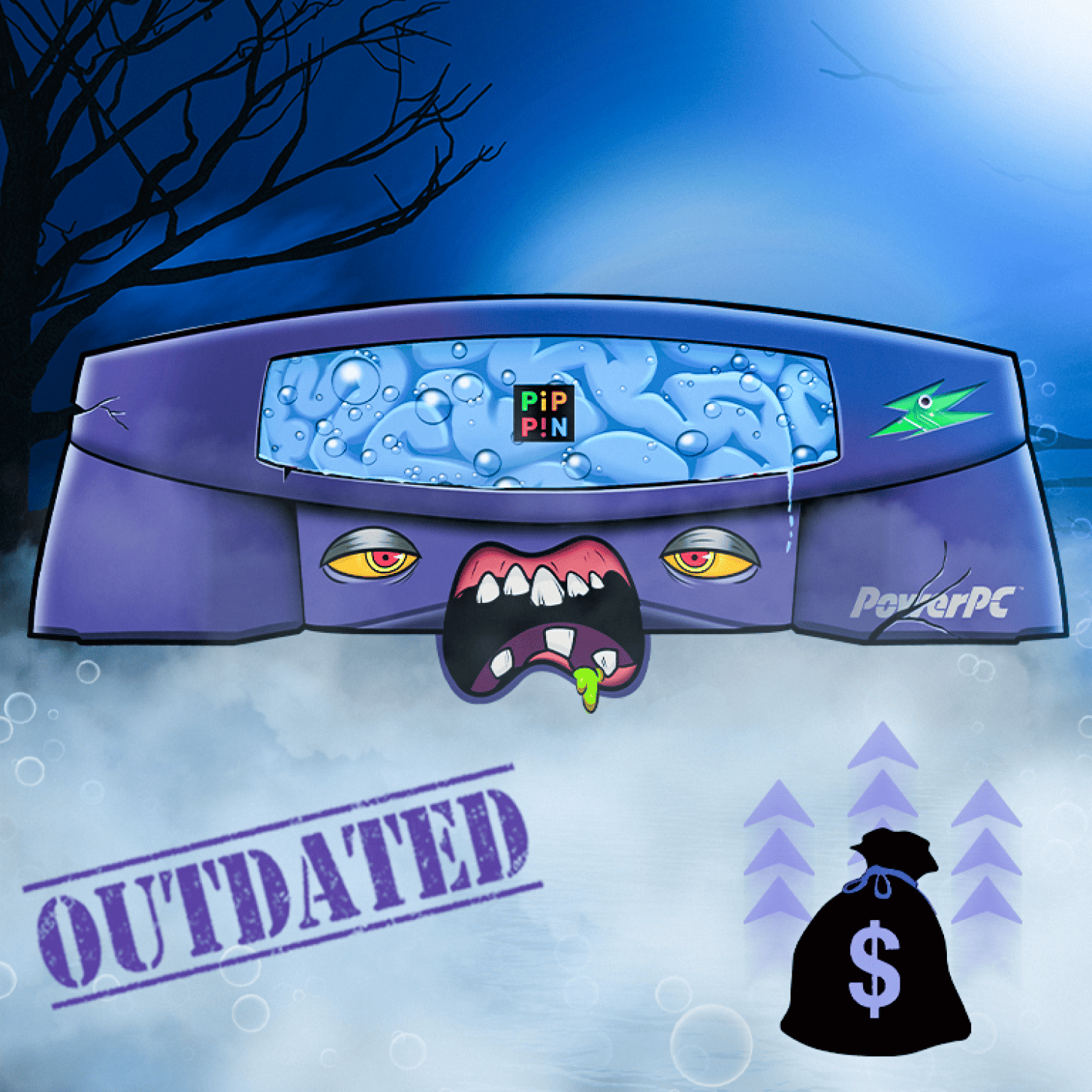
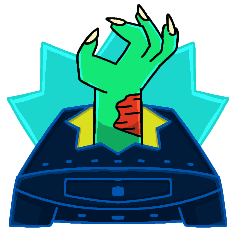
Fact
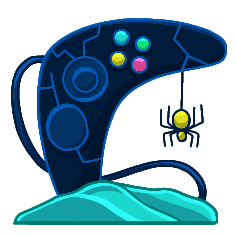
The Bandai/Apple Pippin hardware was released with the completely un-catchy name @WORLD in the US.
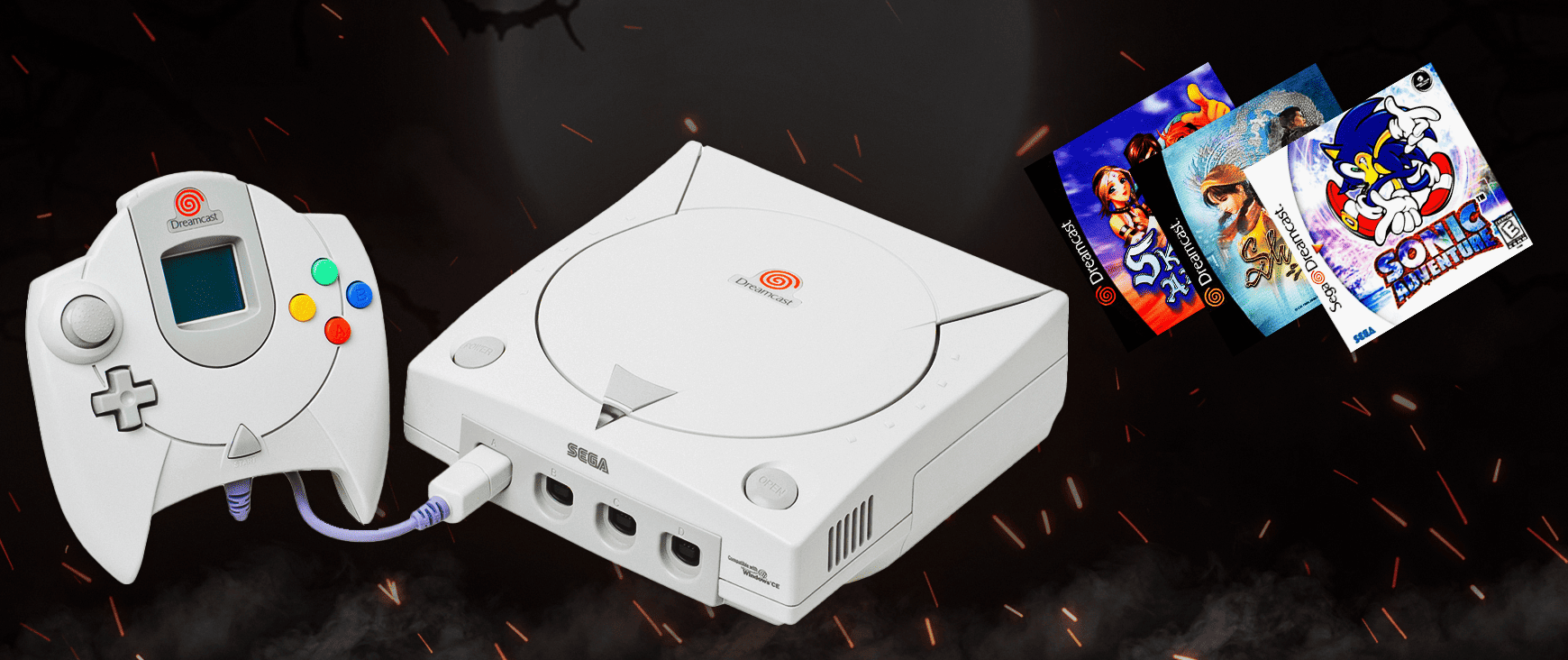
Launched: September 9th, 1999
Introductory Price: $199
Final Price: $50
Discontinued: March 31st, 2001
Units Sold: 9.13 million
Sega’s final attempt at reclaiming some of the home console market share was the Dreamcast.
It was a device that did so much right. When designing their last console, Sega went with cost-effective, off-the-shelf parts that were widely available rather than the notoriously expensive parts they used in the Saturn. This had a double positive effect of making the Dreamcast cheaper to produce AND easier to develop for as far as most developers were concerned. It also had a number of interesting technological advancements, including a built-in modem, the VMU (a memory card that doubled as a handheld console), and downloadable content.
Unfortunately, there were several factors that led to the untimely demise of the Dreamcast. First was the loss of trust in Sega as a company. The fumbled handling of both the 32X and the Saturn was still fresh in consumers’ minds, and it made them wary of purchasing yet another Sega console. Worse than that was the lack of third-party support, which came as a result of certain hardware choices Sega made. The GPU they chose for the Dreamcast was accessible and reasonably priced, but not fully understood by studios like EA, who didn’t want to work with it. EA was a strong partner for Sega’s other consoles, so losing their support was a massive blow to the Dreamcast.

The second and much more powerful factor in the failure of the Dreamcast was the impending consoles from other companies. The PlayStation 2, GameCube, and Xbox all arrived soon after the Dreamcast, and excitement for those consoles drowned out the Dreamcast in a big way.
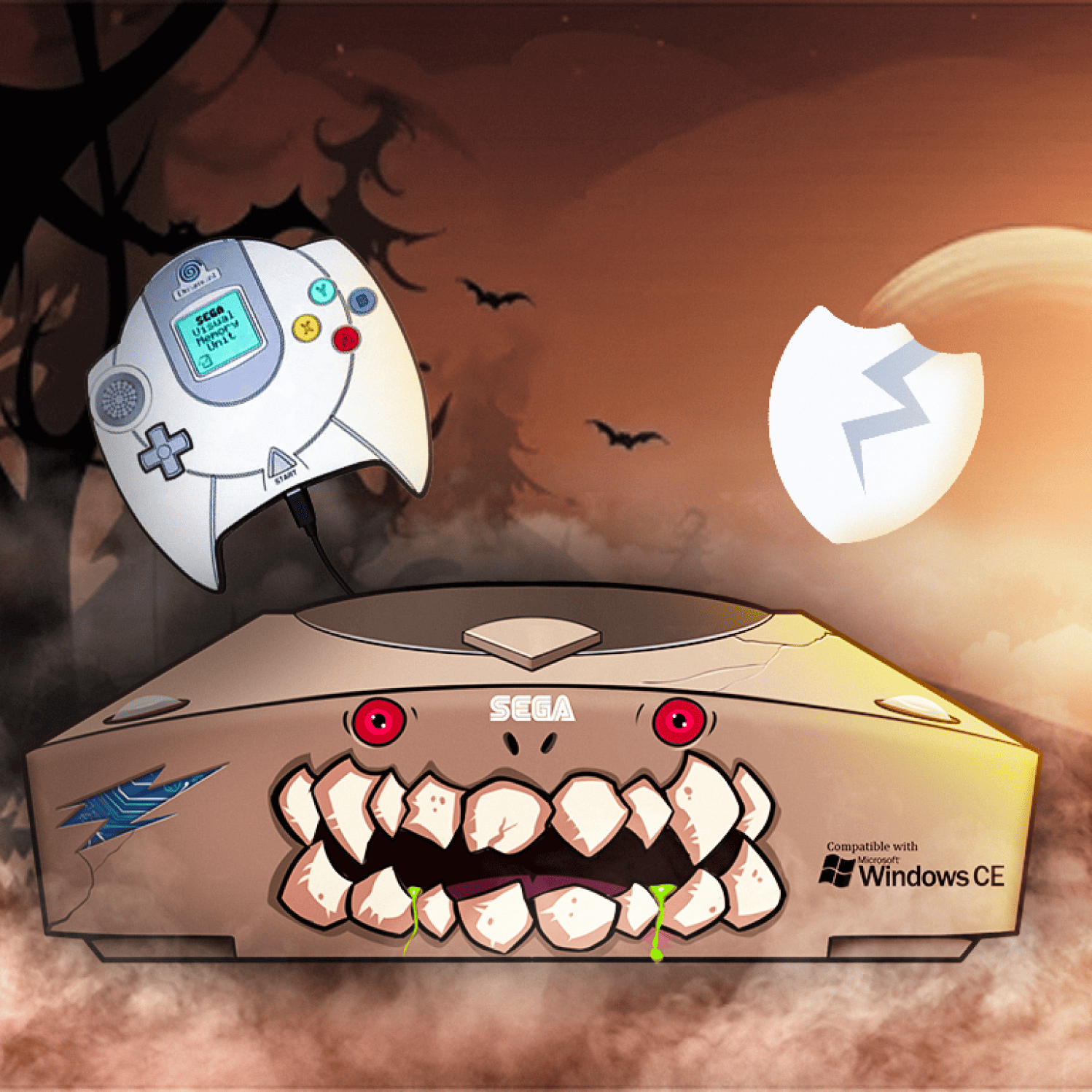
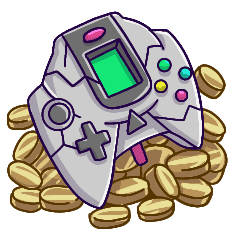
Fact
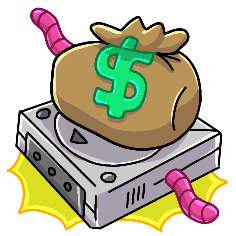
In their attempt to build up a large install base and push their dial-up SegaNet online service, Sega offered a rebate that covered the entire cost of a Dreamcast console for those who bought a subscription.
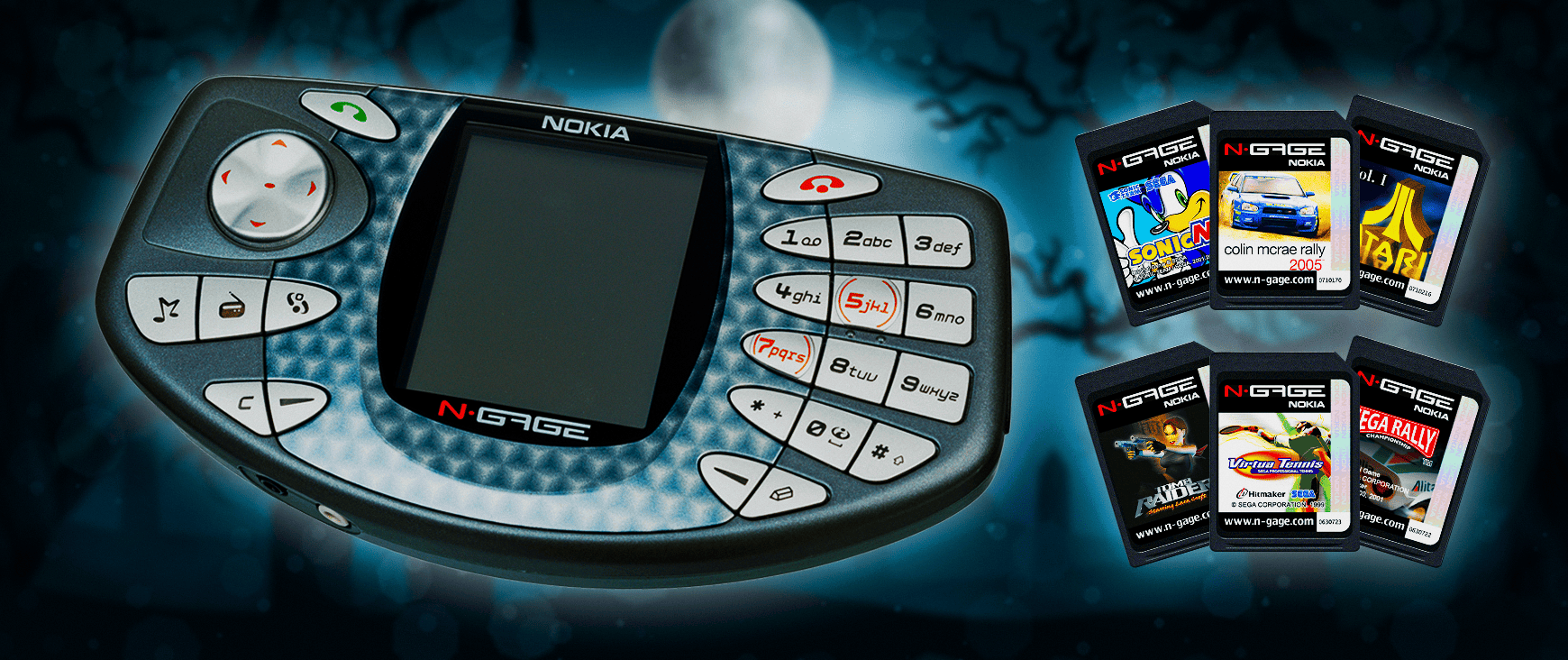
Launched: October 7th, 2003
Introductory Price: $299
Final Price: $100
Discontinued: February 24th, 2006
Units Sold: 3 million
The early 2000s was a strange time for many reasons, not the least of which was the Nokia N-Gage.
This handheld device was the Finnish phone maker’s attempt at taking on Nintendo’s Game Boy Advance handhelds, and while it was kind of a sign of things to come in hindsight, it was definitely not something that was ever going to find success.
Have you ever held an N-Gage? Those things are the worst.
The device was a taco-shaped brick that featured a d-pad and… well… plenty of buttons. The frankly overwhelming number of buttons were there as a result of the device doing double duty as a mobile phone and a handheld gaming device, though it managed to fail in both roles. There were hardly any games made for it, and its shape didn’t exactly lend itself well to taking phone calls. It was capable of rudimentary 3D graphics though, which was… nice? It only had a 2.1-inch screen.
Nokia released an “improved” N-Gage QD a year later, but eventually gave up on making the N-Gage hardware. The N-Gage service (or N-Gage 2.0) carried on the N-Gage name as a mobile gaming platform that Nokia included on its smartphones that ran Symbian OS. N-Gage 2.0 combined 3D games and social features into an app that gave both gamers and socialites something to do on their phones, but the lack of dedicated controls meant few of these games were much fun at all. And, you know, the Game Boy Advance existed, so why would anyone bother?
Understandably, they never made dedicated gaming hardware again.
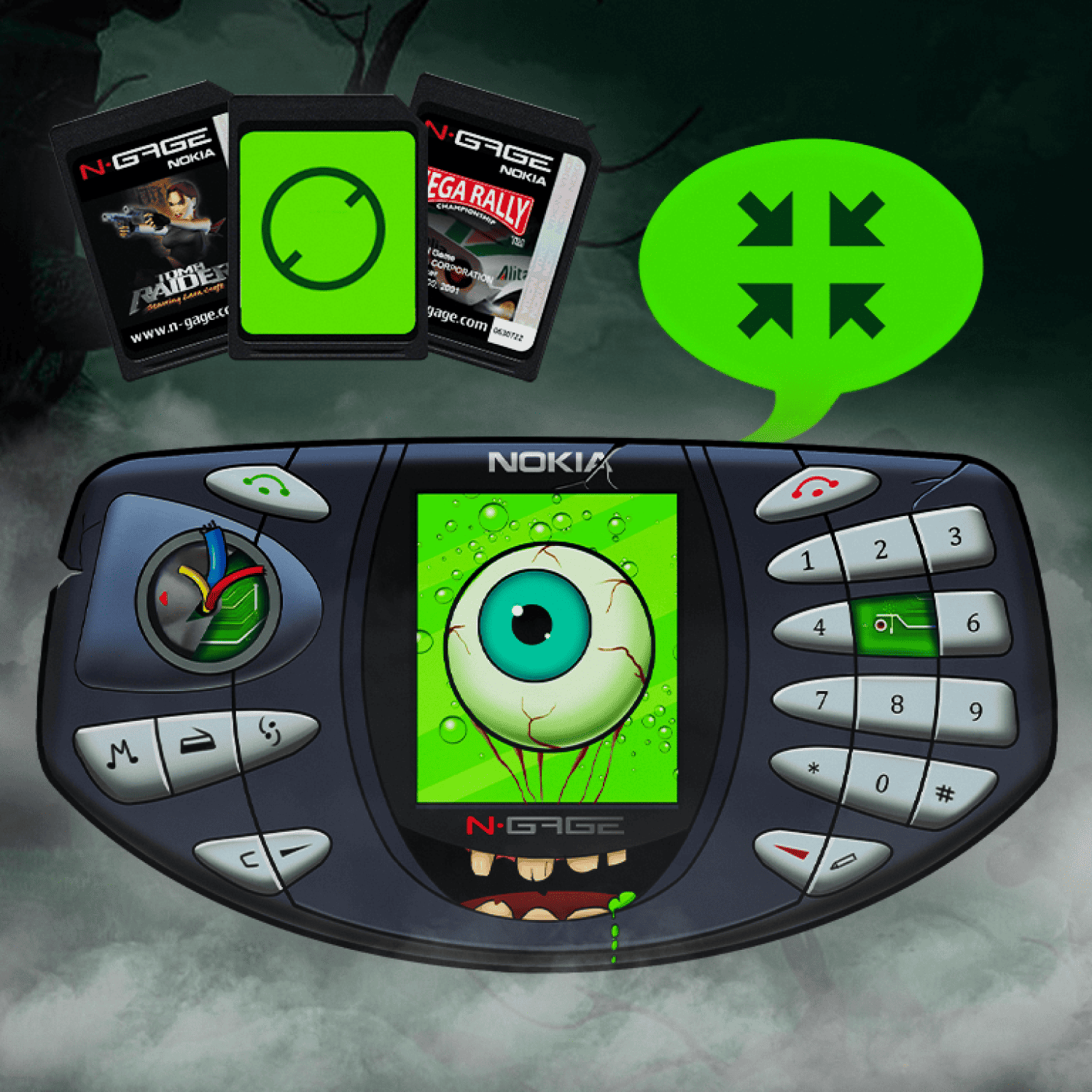

Fact
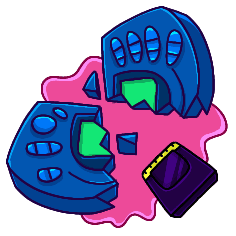
In order to change the memory cards that contained the games, you actually had to disassemble and remove the battery on the original N-Gage. This design flaw was fixed on the N-Gage QD.
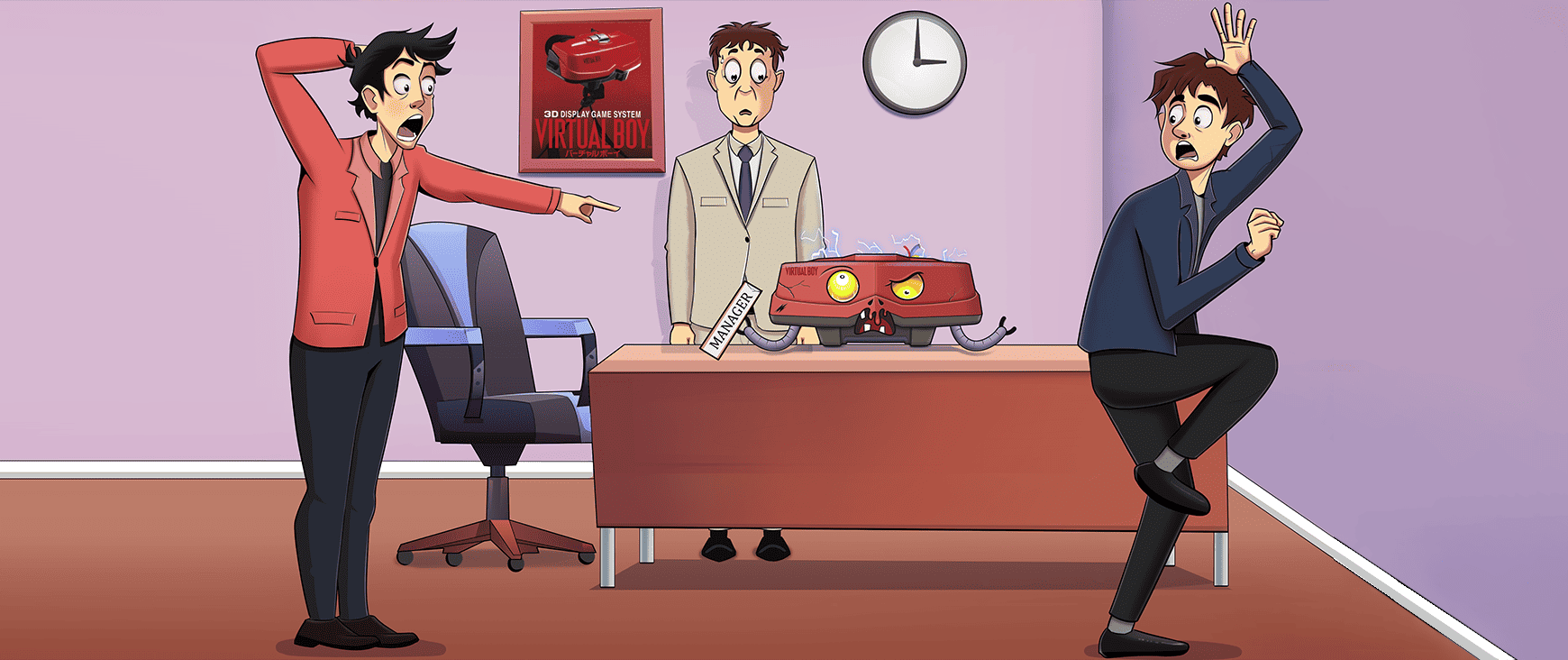
It was hard to see some of these consoles fail, and there were definitely a few that we couldn’t wait to get rid of. Excluding the CD-i of course. It and its jittery, overexpressive Nintendo games can burn in hell where they belong.
However, all of these mishaps, debacles, and some of the worst failures in gaming history can also be seen as lessons learned. There have been several great Nintendo systems that made 3D work without making people sick, and Sega is now a successful video game developer and publisher.
We can only progress and advance through these lessons of failure, and just take a look at the incredible state of the video game industry today! What do a few Atari Lynxes or 32Xs matter when you have photorealistic graphics and haptic feedback?
Although there’s no reason the Dreamcast should have failed how it did. That thing was awesome. The gaming world just wasn’t ready for it yet.

Mike is a video game enthusiast, a chronicler of the 90s, and a collector of many things. Born in the mid-90s, he was able to catch the wave of some of the best things the decade had to offer, like Power Rangers, Pokémon, Bagel Bites, the list goes on. Despite the amount of time that has passed, he still enjoys many of those things today! If he’s not writing or gaming, he’s probably wondering why Warriors of Virtue didn’t take off the same way Teenage Mutant Ninja Turtles did.

Check it out!

March 3, 2025
Play by the Rules! 17 of the Best Board Games from the 90s

February 28, 2025
The Dream Phone Board Game: Who’s Got A Crush On You?

March 3, 2025
30 Funny, Terrifying and Weird Yu-Gi-Oh! Cards